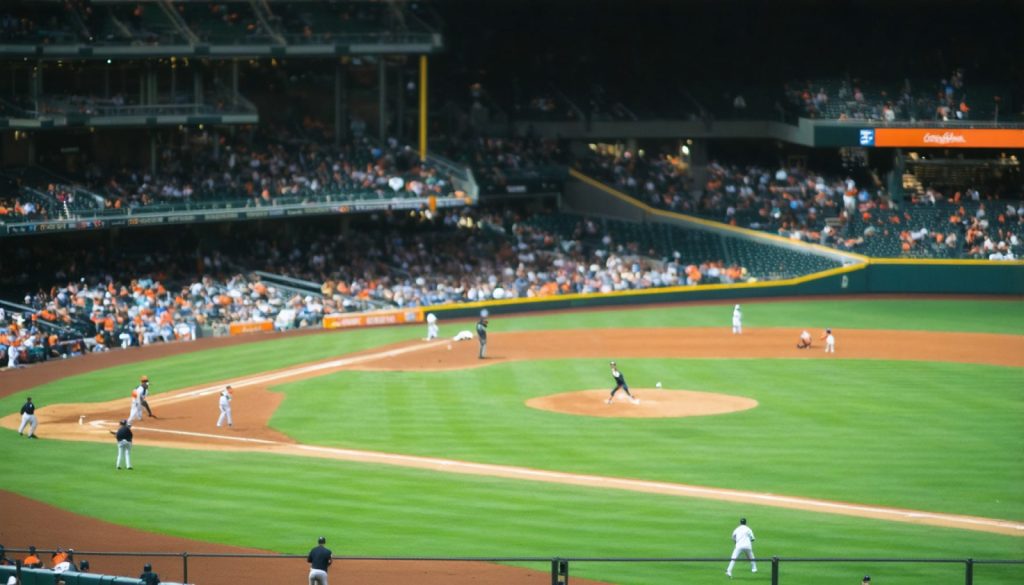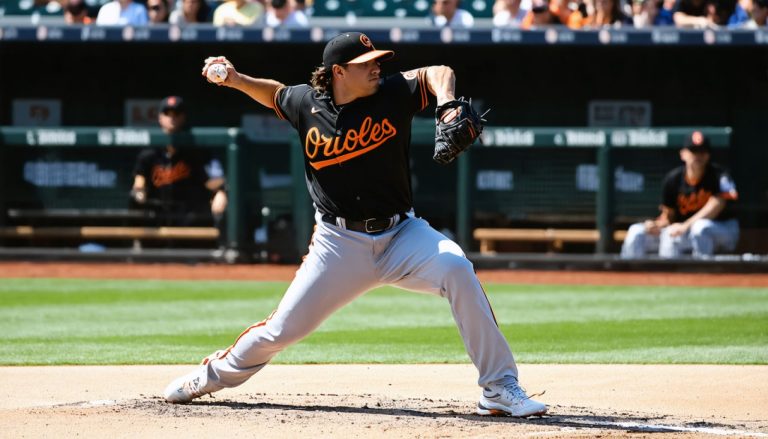
- The Baltimore Orioles are pioneering a data-driven approach to baseball scouting, focusing on AI technology over traditional strategies.
- “PitcherNet,” developed with Canada’s University of Waterloo, employs AI to analyze pitching mechanics using ordinary videos, democratizing player evaluation.
- This AI tool helps scouts assess players cost-effectively, broadening scouting networks with near-laboratory precision.
- The Orioles’ innovation aims to reduce injury risks by understanding biomechanics before signing players.
- Established in their motion-capture lab since 2022, the Orioles’ system boasts a 96.82% accuracy rate.
- Other teams like the Toronto Blue Jays and Los Angeles Dodgers are also leveraging AI, marking a shift in MLB towards technology as the new standard.
- This trend suggests AI is transforming baseball, impacting game strategies and future developments.
In the quiet corridors of Camden Yards, a new era is taking shape, one that is redefining the fundamentals of baseball scouting. The Baltimore Orioles, a team rising from years of rebuilding, are orchestrating a quiet transformation that could ripple across Major League Baseball. Unlike the traditional star-chasing strategies adopted by other franchises, the Orioles are placing their bets on something far more elusive: data.
Beneath the surface of this storied franchise, there’s a partnership as unexpected as it is revolutionary, bringing together the Orioles’ analytics team and engineers from Canada’s University of Waterloo. Together, they have birthed “PitcherNet,” an artificial intelligence system that leverages ordinary footage to perform the complex task of biomechanical analysis. By transforming mere smartphone videos into a wealth of pitching insights, PitcherNet circumvents the need for expensive, high-tech camera equipment and places a powerful tool into the hands of scouts everywhere.
The implication? A democratization of data. Suddenly, evaluating the subtleties of a young Dominican pitcher or a talented college player in Iowa is no longer restrained by costly technology. The application of AI to analyze skeletal movement, release points, and even minute kinematic details broadens the horizons of scouting networks, providing near-laboratory precision without breaking the bank.
This venture reflects a profound shift. The Orioles, once considered an underdog, are swiftly gaining stature as pioneers in player assessment. As injuries plague pitchers at an alarming rate, this forward-thinking approach could mitigate potential risks long before lucrative contracts are inked. In fact, pitcher injuries have been a growing concern, underscoring the need for preemptive action—a challenge the Orioles are prepared to tackle head-on with this AI-driven insight.
Remarkably, the roots of this initiative date back to 2022, when the Orioles invested in a motion-capture lab in Bel Air. But it was the decision to tailor their own AI system, rather than relying on commercially available software, that set them on this groundbreaking path. The result? A staggering 96.82% accuracy rate, a figure that underscores the technology’s potential to revolutionize the traditional scouting landscape.
The Orioles’ innovative stride is part of a larger movement within MLB. Teams like the Toronto Blue Jays and Los Angeles Dodgers are also harnessing the power of AI to stay ahead. The Blue Jays, utilizing ProPlayAI, convert simple videos into analytical gold, enhancing their reach and effectiveness. Meanwhile, the Dodgers employ machine learning to simulate games and hone decision-making strategies. Even the San Francisco Giants are in the mix, using apps like Mustard to refine pitching mechanics.
This technological march signals a broader trend: AI is no longer just an enhancement—it’s becoming the new baseline. Baseball, a sport steeped in tradition, is now embracing the cutting edge of technology. As these changes take root, the impact will reverberate in every inning, every pitch, and every decision made from the dugout.
The Baltimore Orioles, through their daring embrace of AI, are not just playing a game—they’re rewriting its future.
AI Revolution in Baseball: How the Orioles Are Pioneering a New Era of Scouting
Exploring PitcherNet: Transforming Baseball Through AI
The Baltimore Orioles’ collaborative project, “PitcherNet,” is more than just an innovative leap in baseball scouting—it’s a transformative initiative with wide-reaching implications for the sport. This initiative highlights how AI and analytics can democratize access to sophisticated player evaluation technologies, previously limited to well-funded clubs.
Here are some key insights and broader implications of this development that were not fully explored in the primary source:
Real-World Impacts and Use Cases
1. Broadening Talent Scouting: PitcherNet allows for the evaluation of players using common smartphone footage, opening up opportunities to discover talent in regions previously overlooked due to budget constraints. This is a substantial change for amateur scouts and smaller league clubs, potentially increasing the pool of emerging players in MLB.
2. Injury Prevention: By analyzing detailed biomechanics and motion mechanics, teams can identify potential injury risks before they result in an on-field setback. This preventative approach could drastically reduce the number of injuries seen each season, extending player careers and maintaining team performance levels.
3. Training Enhancement: Coaches can receive real-time feedback, allowing for immediate, data-driven adjustments to player technique and form. This could be particularly valuable during spring training or in developmental leagues.
Industry Trends and Market Forecasts
– Market Growth: The sports analytics market is expected to grow substantially, projected to reach $4.6 billion by 2025, according to a report by MarketsandMarkets. The inclusion of AI tools like PitcherNet is likely to accelerate this growth as they become integral to strategic decision-making.
– Adoption by Other Teams: While the Orioles are at the forefront, other MLB teams will likely develop similar solutions, leading to a standardized adoption of AI across the league within the next few years.
Features and Specifications
– Accuracy Rate: PitcherNet boasts a 96.82% accuracy rate, making it one of the most precise tools available for biomechanical analysis in sports, significantly outperforming some commercially available systems.
– Integration: The system’s ability to work with simple video footage, without specialized equipment, ensures a seamless integration into existing workflows for scouts and coaches.
Pros and Cons Overview
– Pros:
– Enhanced player evaluation and talent discovery.
– Cost-effectiveness compared to traditional equipment-heavy systems.
– Real-time, actionable data for injury prevention and performance enhancement.
– Cons:
– Relies heavily on video quality; inferior footage may yield less accurate results.
– Requires training for scouts and coaches to interpret the data effectively.
Security and Sustainability
The digital nature of PitcherNet raises questions about data security. Ensuring sensitive player data is protected against breaches or misuse is crucial. Sustainability is also key; reducing reliance on expensive hardware is environmentally beneficial, aligning sports organizations with broader sustainable practices.
Predictions and Recommendations
– Future of AI in Baseball: AI will not only refine player scouting but also enhance fan engagement, strategic team decision-making, and personalized training programs.
– Immediate Actions for Teams: Teams should consider investing in AI training for staff and explore partnerships with tech innovators to reduce overhead costs while maximizing the utility of analytics.
For those interested in the intersection of sports and technology, engaging platforms like MLB offer insights into the latest trends and tools.
Conclusion
As AI technology continues to grow in scope and capability, the opportunities for transformative impacts are immense. For the Orioles, and indeed all of baseball, embracing AI isn’t just about keeping up—it’s about envisioning and realizing a future where every pitch, decision, and player is optimized through data-driven insights. Whether you’re a fan, coach, or player, staying informed and adaptable will be key in this new era of baseball.



